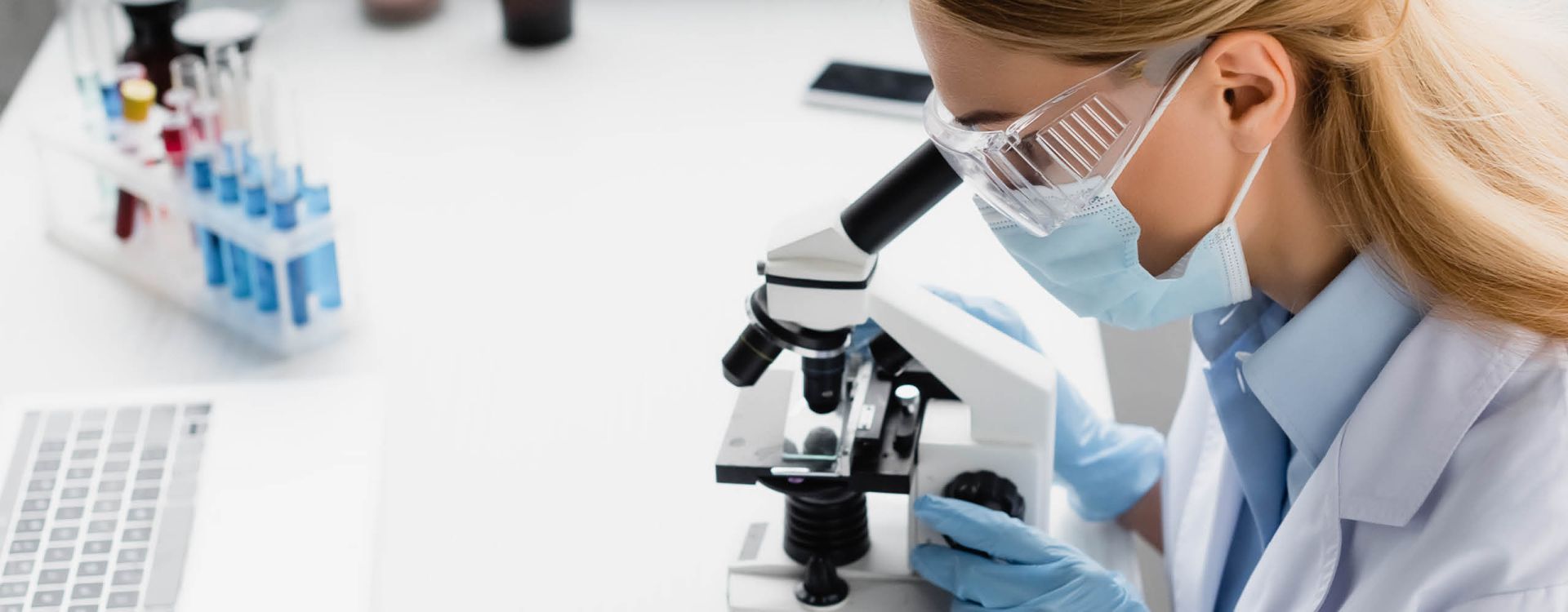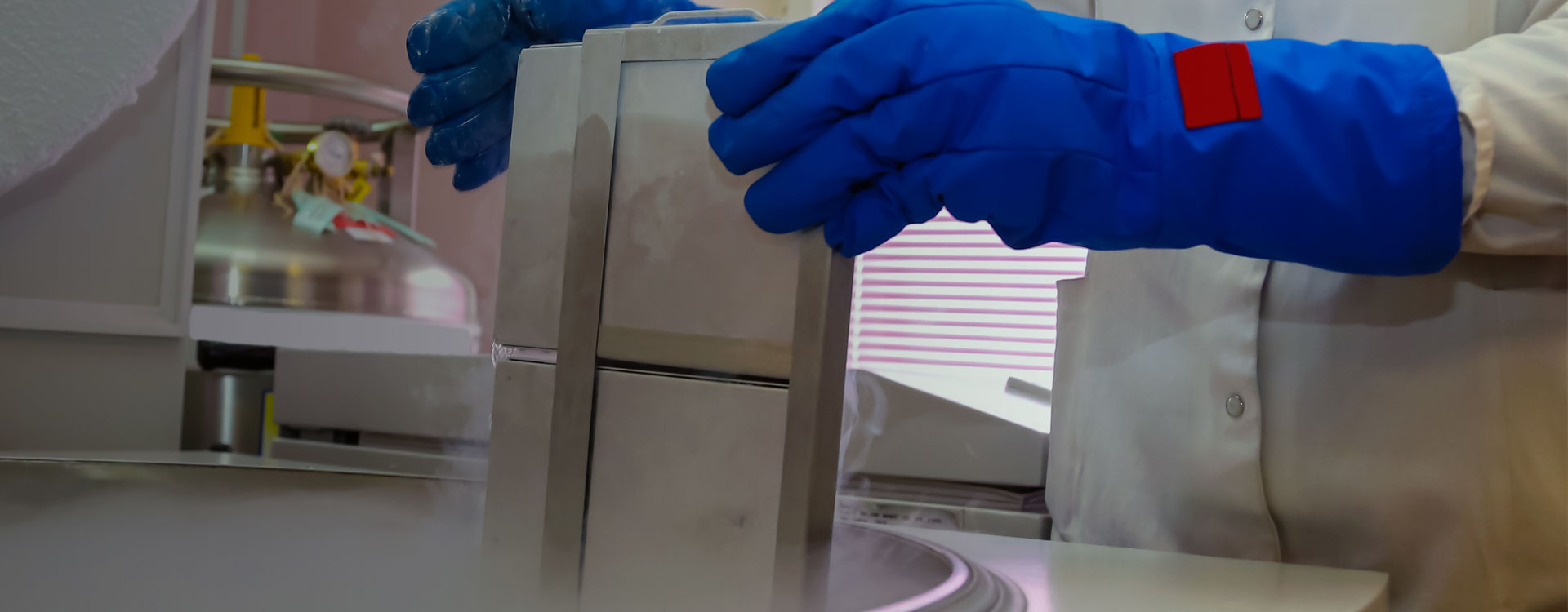At MiracleCord, we believe an informed customer is the best customer. When you’re comparing cord blood banks, it’s important to know what questions to ask — and to have some context for the answers. Here, we’ve compiled the top questions — along with some red flags — to help you make an informed decision and invest wisely in your family’s future.
Questions to Ask a Cord Blood Bank
- Is your lab AABB accredited, FDA registered, and CLIA certified?
- How long have you been in business?
- What is your Google reviews rating?
- Is your collection kit FDA-approved and temperature controlled?
- What tests are run on maternal blood samples?
- What would make my newborn’s stem cells non-viable for storage?
- How quickly are the stem cells processed following collection?
- What method is used to process the cord blood and cord tissue?
- Are the stem cells stored in a compartmentalized storage bag?
- Where do you store the stem cells?
- What happens if I need to use my stem cells but already paid for long-term storage?
- What happens if my cord blood does not get collected or can’t be saved?
- Do you offer incentives to medical professionals to recommend you?
- Do you offer a guarantee if my saved stem cells fail to engraft?
- Do you offer cord blood banking discounts for return clients?
- Is there a fee to access my stored stem cells?
- Will you ever raise my annual storage fees?
- Is it important that a cord blood bank sponsor clinical trials?
Red Flags
- The cord blood bank offers placental tissue banking
- The cord blood bank has hidden fees
- The cord blood bank has low monthly fees, but they are new and have no experience
Business Basics
Choose a cord blood bank that is accredited, has a proven track record, positive reviews, and is financially stable.
1. Is your lab AABB accredited, FDA registered, and CLIA certified?
AABB Accredited
Your cord blood bank’s lab should be accredited by the American Association of Blood Banks (AABB). A lab facility with AABB-accreditation for banking cord blood adheres to the industry's most stringent standards for processing and storing cord blood stem cells.
Some banks are fee-paying members of the AABB, but that’s not the same as being fully accredited. To be accredited, the cord blood banking company must have its laboratory and administrative procedures reviewed, inspected, and validated regularly, and their procedures must comply with the AABB guidelines.
FDA Registered
All cord blood banks that operate within the U.S. must be FDA registered. FDA requirements include establishment registration and listing, donor screening and testing for infectious diseases (except when used for the original donor), reporting and labeling requirements, and compliance with current good tissue practice regulations [*]. Registered establishments are subject to FDA inspection to ensure they are compliant and to prevent infectious disease transmission.
CLIA Certified
CLIA stands for Clinical Laboratory Improvement Amendments, a set of federal laws passed in 1988 to create standards for any laboratory that performs any patient testing. Labs that are registered with CLIA get inspected every two years. The cost of CLIA validation is paid by the laboratory and the program is managed by the US Centers for Medicare & Medicaid Services (CMS) [*].
MiracleCord’s lab is AABB accredited, FDA registered, and CLIA Certified.
2. How long have you been in business?
Stability is important; There are many startups in the industry now looking to entice customers with low rates or other gimmicks that are simply not sustainable. As a general rule, look for companies that have at least 10 years’ experience and a proven ability to get the job done right. Ask them how many units have been released for transplant and if any failed to engraft.
It may also be worth asking if the company is publicly or privately held. Being publicly held is not the same as being a public cord blood bank that accepts donations. Some of the largest private cord blood banks are publicly held companies that answer to shareholders and their desire for ever higher profit margins, and they may be frequently bought and sold, leading to leadership changes.
MiracleCord is a privately held, financially stable company whose lab has been processing and storing cord blood for more than 25 years. To date, more than 100 stored stem cell units have been released from our lab facility. All units released for transplant by MiracleCord have engrafted successfully.
3. What is your Google reviews rating?
To understand what your experience may be like as a customer, take the time to read unsolicited customer reviews from all cord blood banks you’re considering using.
MiracleCord has a 5-star rating from Google reviews.
Collection Kit & Processing
How the stem cells are collected, processed and the time to process are critical to ensuring you get the most viable stem cells from your baby’s cord blood and tissue.
4. Is your collection kit FDA-approved and temperature controlled?
You only get one chance to harvest these precious cells, so the cord blood collection kit matters. You’ll want to make sure the kit:
- Uses a sterile, FDA-approved cord blood collection bag that can also be used within the sterile field in the event a C-section is required.
- Uses Citrate Phosphate Dextrose (CPD), an FDA-recommended anticoagulant and cell preservative, in the collection bag instead of heparin. CPD collection bags have been proven to increase stem cell yield by more than 50% compared to heparin collection bags, and CPD is recommended by the U.S. Department of Health and Human Services for cord blood collection.
- Protects the cord blood and tissue from ambient temperature fluctuations while enroute to the laboratory.
- Is sufficiently robust to prevent any damage to contents.
- Is transported by medical courier only to minimize the potential for damage and expedite the transport.
- Includes detailed collection instructions for the medical professional.
MiracleCord’s StemCare® Collection Kit is among the industry’s best, meeting all of the above requirements. We also employ a next-flight-out medical courier that is available 24/7/365. This is included with every plan, at no additional cost, to ensure your collection kit gets to our lab quickly and safely.
5. What tests are run on maternal blood samples?
The AABB and FDA require several clinical tests to be performed on cord blood, cord tissue, and maternal blood at the time of initial processing [*].
To prevent the spread of infectious diseases, maternal blood samples are collected and tested for infections such as Hepatitis B and C, HIV, HTLV (Human T-Lymphotropic Virus Types I/II), cytomegalovirus, West Nile virus and Syphilis.
If the maternal blood draw detects the presence of an infectious disease, it’s possible you or your baby will require additional testing or treatment, but it typically will not affect the utility of the umbilical cord blood sample.
Some cord blood banks forego critical testing procedures that may ultimately limit your family's ability to use your baby's stem cells in the future. Without these tests, the FDA may restrict your child's stem cells from being released and used for transplant.
MiracleCord performs all required testing during initial processing to ensure compliance with AABB standards and FDA guidelines.
6. What would make my newborn’s stem cells non-viable for storage?
There can be situations where the utility of the cord blood is rendered useless due to a latent disease or condition with the baby, such as Down syndrome, but this is very rare. There can also be circumstances where there is not enough cord blood collected to process. It’s also pretty rare these days, even with preterm infants.
At MiracleCord, we always want the collecting physician or midwife not to try to make the determination if there is enough cord blood, but rather, have the sample submitted to us so our lab can determine exactly how many viable stem cells we can recover and whether it is enough to save.
7. How quickly are the stem cells processed following collection?
The longer it takes to process your stem cells, the fewer cells will be viable for storage. Most cord blood banks process the stem cells 24-72 hours after collection.
MiracleCord offers very fast processing time, with our average coming in at about half the time of most other cord blood banks. Our TimeCritical® Processing helps yield significantly more viable stem cells.
8. What method is used to process the cord blood and cord tissue?
How the cells are processed is important because we want to capture as many viable stem cells as possible.
The gold standard in processing is the advanced AXP® II automated processing system that has the proven ability to recover 99% of cells. This recovery rate is 20% higher than the processing methods used by most other cord blood banks – Sepax® and Hespan®.
While some cord blood banks claim manual processing yields more stem cells, the AXP II system significantly minimizes the possibility of lab technician errors and the introduction of contaminants that can occur during manual processing. On top of that, the AXP II system has the highest rate of cell yield, which may impact transplant success rates and patient survival rates [*].
MiracleCord uses AXP II and a proprietary method of processing cord tissue that saves all cell types, including mesenchymal, endothelial, epithelial, neuronal, hematopoietic, and perivascular. Our method of processing cord tissue mitigates the serious limitations of storing whole tissue and consistently yields recovery of high percentages of viable cells after cryopreservation.
9. Are the stem cells stored in a compartmentalized storage bag?
A compartmentalized bag is useful if you are using your stem cells for a clinical trial and may still want to have some on hand for future use.
MiracleCord uses a multi-compartment cryo-storage bag with five separate segments.
10. Where do you store the stem cells?
Determine where the lab is, and ensure it is accredited and has appropriate safeguards in the event of a power failure or natural disaster.
MiracleCord’s lab is located in Arizona and employs 24/7/365 multi-layer temperature monitoring and manifold emergency power sources, which include generator and battery back-up systems. Our storage facilities have some of the largest bulk nitrogen tanks in the country. In the event of a mass power outage, we can keep your child’s stem cells cryogenically frozen at the proper temperature for several weeks or more without power.
Pricing, Hidden Costs, and Guarantee
Understand what you’re paying for — and how to avoid surprises down the road.
11. What happens if I need to use my stem cells but already paid for long-term storage?
With most companies, you will not be reimbursed.
If you’ve chosen a prepaid 20-year or Lifetime plan with MiracleCord and need to use all of your stem cells before the end of the term, we will reimburse you for the time you already paid but didn't use at the prorated storage amount. We don’t know of another company that offers this reimbursement.
12. What happens if my cord blood does not get collected or can’t be saved?
You’ll want to make sure you’re not on the hook for storage fees in the unlikely event you don’t end up storing your child’s cord blood.
With MiracleCord, there is a $200 deposit billed at the time of enrollment (covering costs associated with the StemCare® collection kit and shipping the kit to you) and the balance isn’t due until after the stem cells are received and processed at our lab. If we don’t receive the kit at our lab, or the sample(s) are not fit for processing and storage, we won’t bill for the balance. The client is only responsible for the deposit.
13. Do you offer incentives to medical professionals to recommend you?
Many cord blood banks offer financial incentives to doctors and hospitals to recommend their services. The costs of these incentives — often subtly hidden so as not to appear as incentives — are ultimately paid for by the customer.
MiracleCord does not pay a national sales force to market to medical professionals, and that’s why we can offer the highest-quality services at lower prices than our competitors.
14. Do you offer a guarantee if my saved stem cells fail to engraft?
It’s important that your cord blood bank offers a guarantee that allows you to find an alternative stem cell source in the event of a failure to engraft. A Scientific American article dating back to 2014 put the cost to acquire a unit of cord blood between $35,000 and $40,000.
If your child's cord blood unit is used in a stem cell transplant and the cells fail to engraft, MiracleCord will pay up to $100,000 towards the cost of procurement of an alternative stem cell source. This guarantee is one of the highest in the industry.
15. Do you offer cord blood banking discounts for return clients?
Many cord blood banks (including MiracleCord) offer discounts for repeat customers and discounts for multiple births. It’s important to save cord blood for all siblings because there are instances when a child’s disease cannot be treated by its own stem cells.
Allogeneic transplants (those from another person, ideally, a healthy sibling) are required when the patient’s disease has a genetic basis, such as sickle cell disease, cystic fibrosis, immune deficiency syndromes, bone marrow failure, lymphoma, and genetic metabolism disorders.
MiracleCord offers significant discounts for repeat customers as well as multiple births. Contact us for more information.
16. Is there a fee to access my stored stem cells?
Some cord blood banks charge a fee to access your stem cells, along with shipping charges.
With MiracleCord there is no cost to retrieve and or ship the stem cell unit(s) to a U.S. transplant hospital for the first use. For subsequent use, or if shipping outside the U.S., the client or their insurance would cover the shipping cost. To access stored stem cells, you need only contact us. We’ll walk you through the release forms needed and coordinate with your care team as part of our service for no additional fee.
17. Will you ever raise my annual storage fees?
Over the course of several decades or a lifetime, it’s not unreasonable to expect a periodic increase associated with increases in the costs of medical supplies, lab services, or storage. Some companies raise their annual storage fees every year or two.
So the question you really want to ask your cord blood bank is, how often have you raised annual storage fees in the last 5 years? 10 years? 15 years?
MiracleCord has had only one annual storage fee increase in the last 15 years.
18. Is it important that a cord blood bank sponsor clinical trials?
Some of the other large cord blood banks promote the clinical trials or research they sponsor or support. We applaud their efforts to further the use of stem cells for life-saving treatments and believe ongoing stem cell research is important, but this research is going to continue whether sponsored by cord blood banks or not.
The question to ask is, does a bank’s sponsorship of a trial translate into access to such trials for their customers? Are their customers ultimately paying the costs of these sponsorships regardless of their service fees?
It’s worth noting that a large percentage of the stem cells donated to public cord blood banks are sold for research. There is a great deal of research into stem cell transplant applications, with thousands of clinical trials already initiated.
MiracleCord is always looking to find new treatment opportunities for stem cells, but we do not financially support these clinical trials in the interest of keeping our service fees as low as possible.
Red Flags
The cord blood banking industry is full of providers, large and small, ethical and …not-so-much. Here are a few of the red flags to watch out for when choosing your cord blood bank:
1. The cord blood bank offers placental tissue banking
If you find a cord blood bank that offers placental tissue banking, we urge you to steer clear of them. Here’s why:
Cord tissue and placental tissue both contain mesenchymal stem cells (MSCs). MSCs can differentiate into many kinds of cells, including skin, bone, fat, muscle, cartilage and organ cells, and thus represent the most cutting-edge discoveries in regenerative medicine today. MSCs have also been shown to suppress the body’s immune response so doctors sometimes use them in addition to HSCs collected from cord blood to mitigate transplant rejection.
The best place to harvest MSCs is in the cord tissue. It is far more difficult to extract MSCs from the placenta due to cross-contamination with the mother’s cells, and it’s an unnecessary expense (a gimmick, really), because we have the ability to expand MSCs captured from cord tissue by thousands of times, providing a virtually unlimited supply. So placental tissue banking adds to the cost for no additional benefit.
2. The cord blood bank has hidden fees
Many cord blood banks seem to offer low costs but actually add significant fees to their advertised pricing midway through the enrollment process. For example, one competitor charges an additional $250 for medical courier, $59 for a multi-compartment cryogenic-bag, and $39 for weekday overnight shipping of the collection kit to the client. These services are all included in MiracleCord’s pricing.
3. The cord blood bank has low monthly fees, but they are new and have no experience
If it sounds too good to be true, it probably is. There are some new companies in the marketplace trying to lure customers with low monthly fees for their storage plans. We can say from experience that these plans with low monthly fees will wind up costing you a lot more in the long run.
Also, it’s important that the company you choose will be in business for a long time to come, and the financial stability of these new companies, as well as the quality of service provided, is questionable.
The Bottom Line
You only get one chance to save your newborn’s cord blood or tissue, and the company you choose will be your family’s safety net for many years to come. When choosing a cord blood bank, price is important, but value for your investment is even more important.
We believe MiracleCord offers the best of both worlds: the industry’s best pricing and the best overall value. That’s one reason why we were awarded Best U.S. Cord Blood Bank by Global Health & Pharma, an independent biotech rating organization, in 2021 and again in 2022.
Download our Free Info Kit to learn more or contact us at 888.743.2676 to speak to a customer service representative.
AXP is a registered trademark of ThermoGenesis Corp.; Sepax is a registered trademark of Biosafe S.A.; Hespan is a registered trademark of B. Braun Medical Inc.
DISCLAIMER: THE INFORMATION ON THIS WEBSITE IS NOT INTENDED TO BE USED AS MEDICAL ADVICE.The materials and information contained on the MiracleCord website is provided for educational and informational purposes only, and is not intended to, and does not constitute, medical or other health advice or diagnosis, and should not be used as such. You should not use this information to diagnose or treat a health problem or disease. If you are seeking personal medical advice, you should consult with a licensed physician. Always consult with a qualified health care provider regarding a medical condition.




